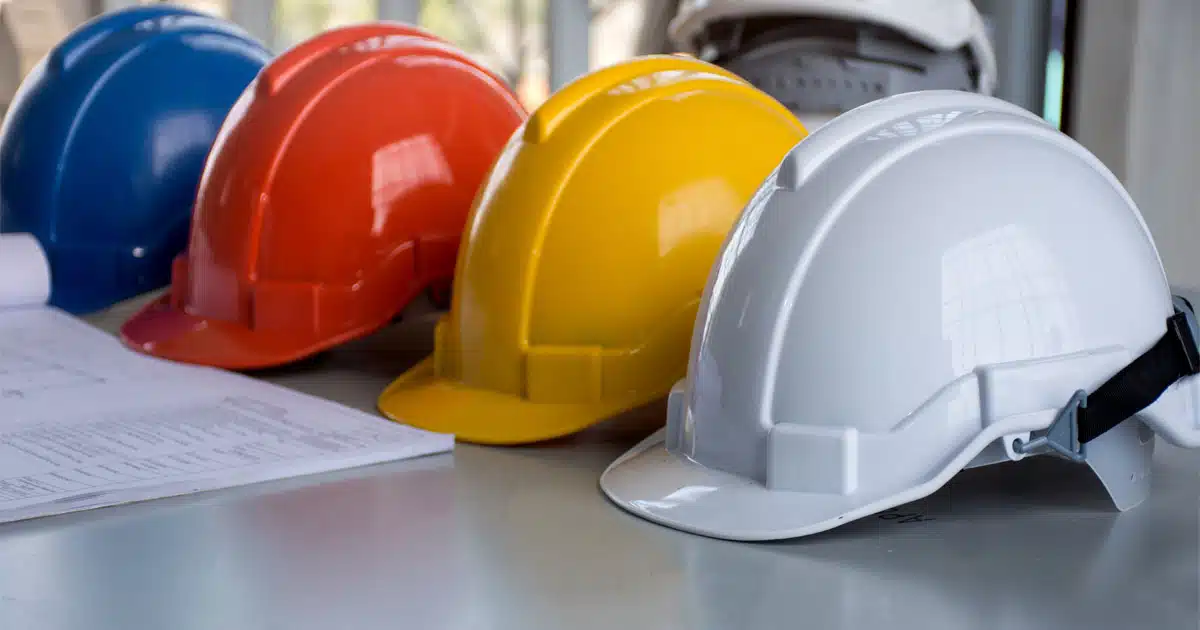Hard hat safety refers to procedures on the worksite intended to limit the risk of serious work injuries. Hard hats are a part of many construction site projects as well as many other jobs that involve hazards.
Hard hat use is common in a variety of workplaces today, but their use actually goes back to the early 20th century. Protective headwear was used during the construction of the Hoover Dam and the Golden Gate Bridge. Hard hats were so successful that they began appearing in many other types of work sites, like mining operations and shipyards. It was not long before hard hats became a standard part of workplace safety procedures throughout the United States. The Occupational Safety and Health Administration (OSHA) now mandates the use of hard hats for anyone working in areas where objects may fall and in other dangerous environments.
Hard hats can protect against a variety of potential injuries. Environments like construction sites can cause injuries due to heavy falling objects. Construction accidents can be caused by power tools and heavy machinery as well, and a hard hat can prevent serious work injuries. Worksites that involve electrical risks can also cause injuries or death if employees are not wearing proper safety equipment. Hard hats are a necessity for many employees.
Hard Hat Design and Components
Hard hats consist of two important safety considerations. The shell is the hard part that protects the head from injury. The suspension is the strap or another adjustable component that secures the shell to the wearer’s head. Without both of these components in place and properly functioning, the hard hat cannot do its job properly, and the health of the employee is at risk.
What are the Different Types of Hard Hats?
Hard hats come in a variety of types that are divided into classes that help to identify their purpose. Hard hats are designed for a range of safety issues, such as direct blows to the head and even electrical currents.
Common types of hard hats include:
Type I: Hats designed to protect the wearer from falling objects and other types of impact from above. These hats are specifically focused on protecting the top of the head and offer less protection to the sides and back. Hard hats have different types and classes to help identify what they are designed to protect wearers against.
Type II: This variety is focused more on protecting the wearer from blows and objects from the side or laterally. They are designed to offer protection to the front, back, side, and top of the head. To achieve this level of protection, they undergo extensive testing. Safety testing ensures that they are properly aligned for chin strap retention and that they offer solid off-center penetration resistance.
Common classes of hard hat include:
Class E: Specifically designed for electrical resistance, these hats can hold up to 20,000 volts of electricity.
Class G: As somewhat of a hybrid, this class offers protection from impact while also being designed to withstand up to 2,200 volts of electricity.
Class C: This is the basic hard hat class that offers protection from impact but no protection from electric shock.
What are the Risks Associated with Improper Hard Hat Use?
Hard hat safety requires proper use. If an employee wears a hard hat but does not have it properly secured, they are at increased risk of injury. The same goes for employees who decide to wear a ballcap or other unapproved type of headgear under their hard hat. Any use that interferes with the ability of the hard hat to offer protection can result in severe injuries or death.
Employees on a dangerous job site have certain responsibilities for their safety as well as that of their co-workers. Typically, worksites that require hard hats will have posted regulations, and those without proper safety gear may not be allowed on the site at all.
What Should I Do After a Workplace Injury?
After a workplace accident, it is important to document the incidence, and report the event as clearly as possible. When an injury occurs at the worksite, the employee needs to know their rights and may benefit from consulting a lawyer for help with Workers’ Compensation.
Bear DE Workers’ Compensation Lawyers at Rhoades & Morrow Help Employees Navigate Complex Legal Issues Surrounding Workplace Safety
Hard hat safety is important on many worksites, but some injuries are unpreventable. If you have been injured on the job, one of our skilled Bear DE Workers’ Compensation lawyers at Rhoades & Morrow is available to help. For a free consultation, call us at 302-600-1107 or complete our online form. Located in Wilmington, Bear, and Milford, Delaware, we serve clients throughout Middletown, Dover, Milford, Hillsborough, Lewes, Rehoboth, Elsmere, and Seaford.





